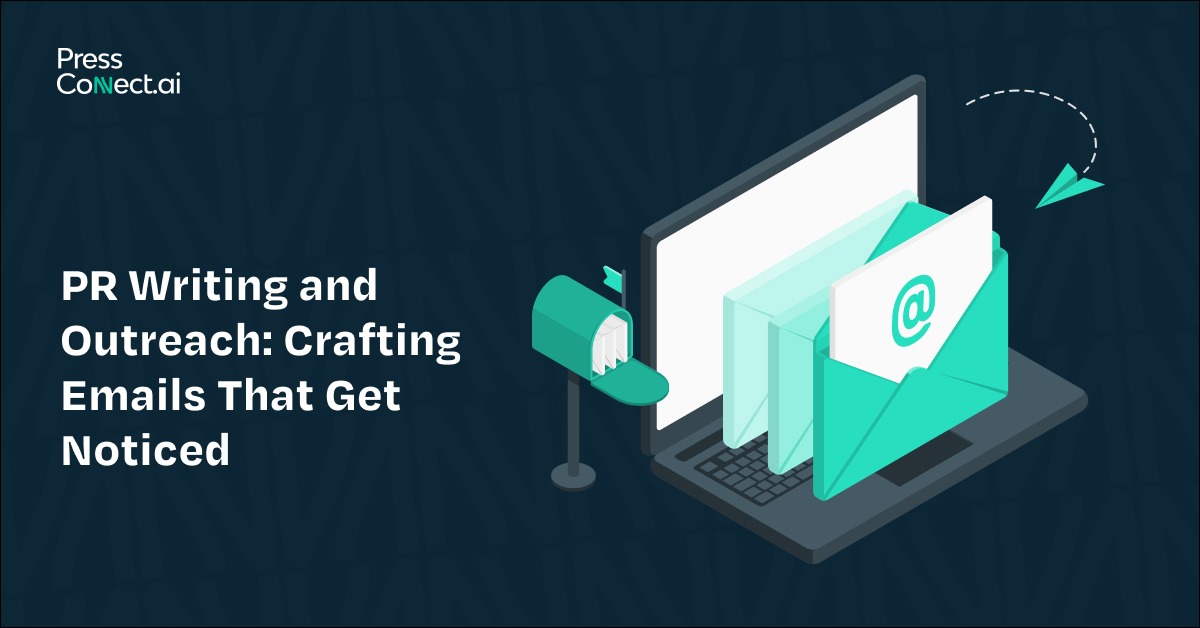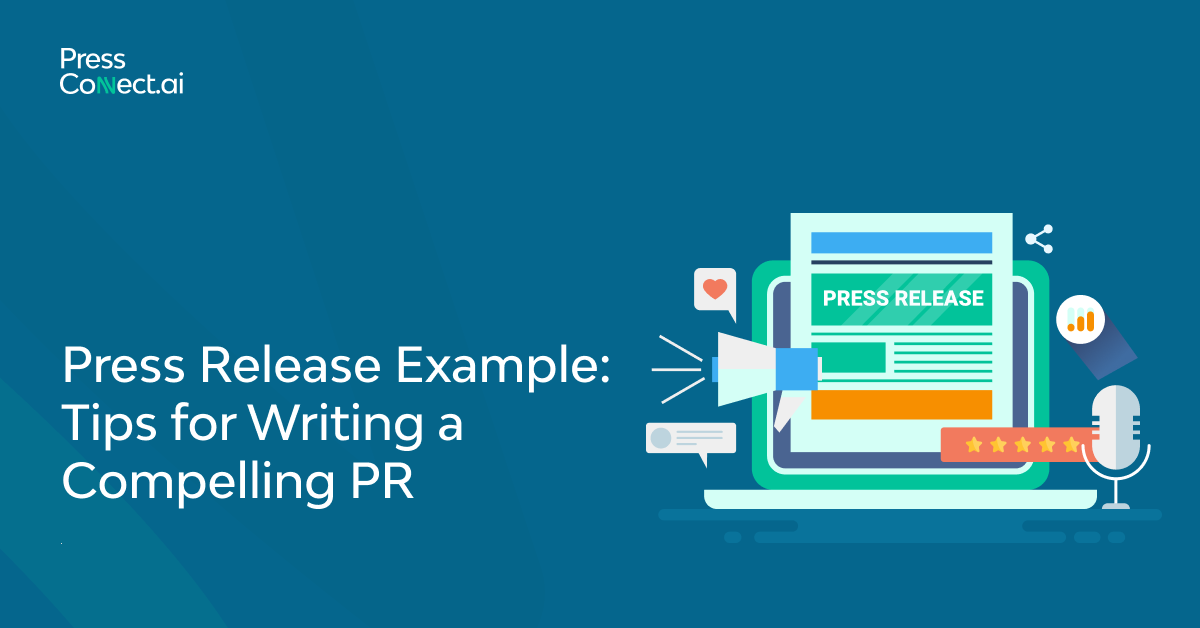PR Writing and Outreach: Crafting Emails That Get Noticed
PR is an industry that requires written work as one of its key methods of communication and reportage. Of many tools available to the PR specialist, it is sometimes a simple and very effective option, effectively reaching out and communicating with the target public and campaigning. However, with people receiving hundreds of emails daily and the continued shrinking attention span, getting such emails noticed is not very simple. The main issue is that PR writing implies a different approach and requires the perception of PR as a distinct form of Contact Management. This blog focuses on the basics of PR writing, PR’s use of emails, and how to write PR messages that pop and generate effective outcomes.
Why The PR Emails are More Important than Ever
Emails remain an essential method of communication, particularly in the digital PR age. They are usually the initial contact between PR practitioners, media outlets, influencers, or stakeholders. A proper PR email can lead to great partnerships and the opportunity to work on informative campaigns and gain media coverage. On the other hand, they may end up deleting the email, ignoring you, or worse, would be put off by your brand. Appreciating the PR email role in PR practice presents the foundation for acquiring skills in PR email writing and outreach.
Understanding the PR Writing
One of the main propositions that put forward the foundation of successful PR writing is identifying your audience. Knowing their preferences, interests, and problems is helpful whether you are targeting journalists, influencers, or stakeholders. Audience research enables the creation of specific pieces that improve the outreach of a communication. For instance, the journalist might be searching for opportunities to create news, while an influencer will focus on how a collaboration helps his audience. If your PR emails are to be a success, you need to ensure that they follow the requirements mentioned above in the letter.
Core Components of Effective PR Writing
PR writing is not just about stringing words together—writing and creating messages that elicit the right emotion, knowledge, and call to action. Unlike general content writing, PR writing is strategic in fulfilling specific goals, such as building brand esteem, managing images, or creating awareness of events and activities. It is theologian cleverness, correctness checking, and narration.
- A Clear Purpose: The type of writing used in PR should always have an objective: informative, persuasive, or for business.
- Audience-Centric Messaging: When connecting with the audience and producing relevant references, there is no better approach than learning more about the audience.
- Compelling Headlines and Subject Lines: These hooks grab readers’ attention and encourage them to get additional information.
- A Strong Call-to-Action (CTA): Ask the audience to do something more at a specific time, for instance, attend an occasion, disseminate information, or buy a product.
PR campaigns are famous, and many examples of successful PR campaigns show how writing can persuade the public and create the needed outcome. Whatever the type of PR, whether through printing, online, or even face-to-face correspondence, the key ingredient is communication.
Outreach: The Place of PR Emails
Emails are the backbone of most forms of PR outreach for the following reasons: They allow fast and efficient one-on-one real-life communication with audiences, media personnel, and other potential associates. PR emails are an effective tool for creating relationships with the media, gaining coverage, and driving the message further in existing campaigns.
- Building Awareness: Educating the audience on new advancements, goods, or services.
- Driving Engagement: Getting the target audience to ‘do something’ – as income for a particular event, visit a specific website, etc.
- Strengthening Relationships: Keep the media contacts, influencers, and other stakeholders easily accessible.
Some features that were noted for effective PR emails include the following: Although they are business-related, there is appeal to the recipient.
Crafting Emails That Get Noticed
But when it’s your turn to create an email amidst hundreds if not thousands of others, that’s quite the challenge! Here is a breakdown of creating emails that get read and elicit the desired response.
This is because wherever you want your message to go, the subject line is the first that the recipient is likely to notice. A proper subject line can be a real boon: it can make the recipient open the letter or immediately delete it.
- It should be as concise and brief as possible; in actuality, it could be something that can fit into the 50-character space.
- Emphasize the benefit or importance of the content (e.g. “You are Invited to Our Launch Party”).
- Incorporate self-crafting to add an application to the receiver of the message.
- Do not use sensational headlines or aggressively sales-promoting language, which costs trust and reliability.
When the recipient has opened the email, the body of the text must interest them and pass the message in the first place.
- The best topic is, to begin with a statement that addresses the possible needs or interests of the recipient or target of the business letter.
- When relaying a message, ensure you use simple language when passing the message across.
- The text should be divided into brief sections and bullet points to ensure they stand out.
- Over time, it helps to always end with a clear call to action: ‘Click here to RSVP’ or ‘Please email us for more details.’
Measuring PR Email Effectiveness
So, when it comes to PR, the outcome of an email campaign is determined by what is written in the mail and the value attached to it. PR metrics give an essential message about the success of specific activities and where and what is not successful.
- Open Rate: The percentage of recipients who open your mailed emails.
- Click-Through Rate (CTR): This measures the extent to which people being emailed clicked other links present within the message.
- Engagement Rate: How recipients engage with your email, for instance, by clicking a reply button, sharing it, or forwarding it.
The analytics tools also enable PR professionals to analyze their emails and determine how to improve their outreach programs. Quantitative results show the impact of campaigns and assist in modifying approaches to gain more efficient outcomes.
Common Mistakes That Should Be Avoided Whenever You’re Writing PR
Even PR practitioners with years of experience in their back pocket can stumble on these email pitfalls. Some of these mistakes can decrease outreach effectiveness if made, though avoiding them can help.
- Overloading Emails with Information: Be specific and deliver one message at a time or, even better, one CTA.
- Using Generic or Impersonal Tones: The principal focus here is how to make the overall branding or marketing communication process personal because personal is recognizable.
- Ignoring Follow-Ups: Traditional campaigns don’t forget follow-up emails to keep the clients’ interest alive.
- Neglecting Design and Readability: The text’s appearance can lessen the impact of the email. The design should be formal and minimalistic.
Conclusion: How Press Connect Can Help with This
Writing PR materials and sending emails is a fundamental skill for a PR manager. You must be smart even when creating subject lines for your emails, let alone defining the key performance indicators for your marketing campaigns. But let me tell you, it’s not always rocket science to figure out PR outreach, especially when it gets a bit complicated.
That is where Press Connect comes in to help you make your PR process easier. Press Connect enables PR professionals to accomplish objectives that can only be fulfilled in the style embraced by the resources to bolster communication strategies, deepen relationships, and more. Whether you’re writing business messages, analyzing the results of your advertising campaigns, or seeking to reach out to new clients.






